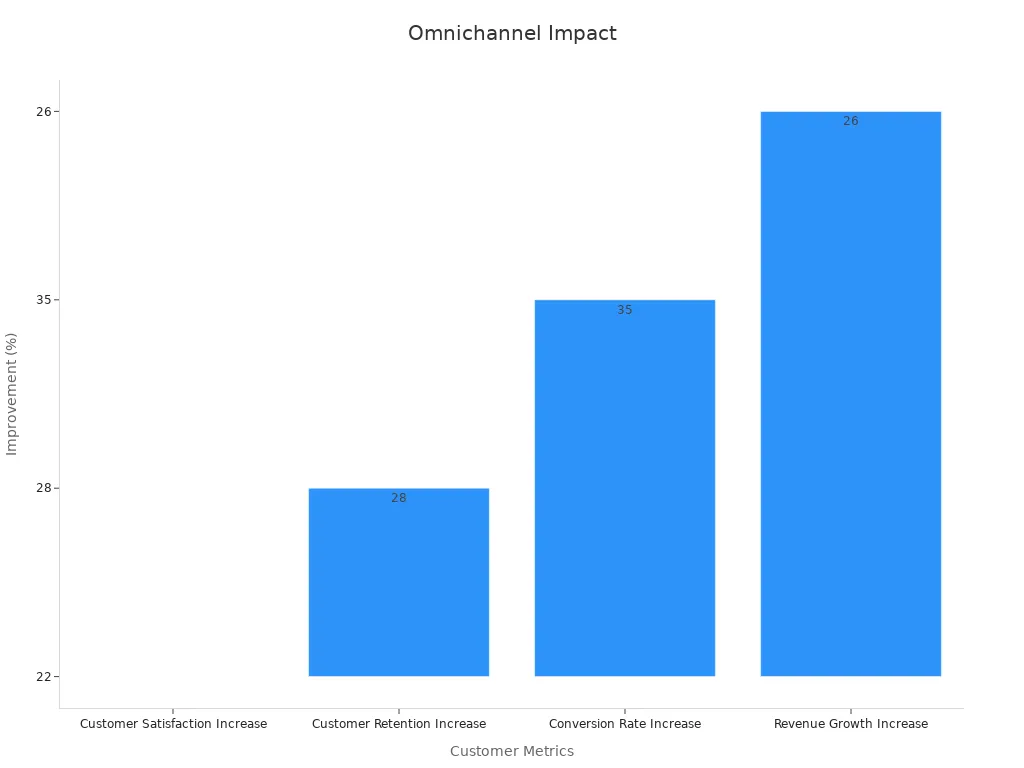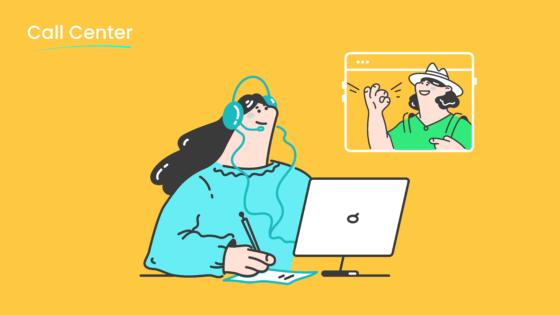How client vs customer meaning affects loyalty and retention

In 2025, understanding the difference between client and customer shapes loyalty and retention outcomes. Imagine a business leader who treats every client as a one-time customer. This approach often leads to missed opportunities for deeper engagement and long-term value. Sobot, a leader in omnichannel solutions, helps companies avoid this mistake by using advanced tools like Sobot AI to support both client and customer needs. For example, Opay improved its customer satisfaction from 60% to 90% after adopting Sobot’s unified platform. Recognizing the client vs customer meaning allows teams to personalize service, increase retention, and drive lasting loyalty.
Client vs Customer Meaning

Key Differences
Understanding the client vs customer meaning helps businesses shape their approach to service and retention. A customer usually seeks a quick transaction, such as buying a product or using a service once. In contrast, a client expects a long-term relationship, often involving ongoing support and personalized solutions. Companies that recognize these differences can tailor their strategies for each group.
The following table highlights the main distinctions:
| Aspect | Customers | Clients |
|---|---|---|
| Relationship Focus | Immediate purchases and transactions | Long-term partnerships |
| Service Expectations | Standardized solutions | Personalized, customized solutions |
| Success Metrics | NPS, CES, CSAT | CLV, health score, renewal rates |
| Interaction Type | Basic transactions | Value-driven partnerships |
| Service Delivery | Automated options | Dedicated support |
| Technology Usage | Self-service, basic software | CRM systems, analytics tools |
| Retention Strategy | Loyalty programs | Proactive communication |
| Profitability Impact | Standard margins | 60% higher profitability |
| Communication Style | Standardized | Personalized outreach |
| Service Resolution | Self-service | Dedicated support |
Digital transformation has changed how both clients and customers interact with brands. Automation now handles 80% of routine customer inquiries, while client management relies on advanced CRM systems and analytics. Companies that focus on client relationships see about 60% higher profits than those with only transactional customer strategies. Source
Why It Matters
The client vs customer meaning impacts every stage of the business journey. Companies that understand this distinction can build stronger loyalty and retention.
- Positive service reputation increases the chance that a customer will choose a business over competitors.
- Research shows 73% of companies with above-average customer experiences outperform their competitors financially.
- Proactive service, such as anticipating issues for clients, creates new marketing opportunities and encourages repeat business.
- Personalized service improves online conversion rates by 8%. However, 62% of customers want more tailored experiences.
- Customer service teams gain insights into behaviors and preferences, helping businesses adjust their messaging and products.
Sobot’s omnichannel solutions help companies manage both client and customer relationships. By unifying communication channels and using AI-driven tools, Sobot enables businesses to deliver personalized support and proactive outreach. This approach supports the unique needs of each group, driving higher satisfaction and long-term loyalty.
Relationship Dynamics
Transactional vs Relational
Business relationships can take many forms, but two main types stand out: transactional and relational. Transactional relationships focus on short-term goals, clear expectations, and efficiency. These relationships often involve quick exchanges, such as a customer making a single purchase. They offer benefits like transparency, specialization, and quick problem resolution. However, transactional relationships may lack emotional investment and trust, which can limit deeper engagement.
Relational business relationships, on the other hand, emphasize trust, empathy, and collaboration. These relationships require ongoing communication and a long-term perspective. Research on community-supported business models shows that relational approaches involve active participation, co-creation, and high transparency. Companies that invest in relational business relationships often see higher relationship value and stronger engagement. For example, quarterly relational Net Promoter Score (NPS) surveys can improve retention rates by 5.2% source. Relational models foster loyalty and support long-term partnerships, while transactional models focus on specific events.
Tip: Businesses can combine both approaches, creating hybrid models that balance efficiency with deep relationship value.
Client Relationship Management
Client relationship management stands at the core of building long-term partnerships and maximizing relationship value. Effective strategies include regular communication, personalized solutions, and quick problem-solving. Industry data shows that retention rates for investment advisors can exceed 90% when companies prioritize client relationship management. Tools like CRM systems and data analytics help track key metrics such as churn rate and customer lifetime value.
Successful client relationship management relies on understanding client needs, providing tailored experiences, and maintaining proactive engagement. Companies like Sobot support client-centric operations by offering unified platforms that streamline communication and enhance engagement. Real-world examples, such as loyalty programs and exclusive offers, demonstrate how businesses turn clients into loyal advocates. Continuous improvement and data-driven personalization remain critical for sustaining strong business relationships and driving growth.
Customer Experience Strategies
Personalization and Omnichannel
Personalization and omnichannel strategies have become essential for delivering exceptional customer experiences. Companies now use data analytics and AI to create a personalized experience for every customer. This approach meets rising expectations and builds loyalty. Businesses that adopt omnichannel solutions provide convenience, consistency, and real-time information across all touchpoints. Customers enjoy seamless transitions between channels, whether they interact through social media, email, or phone.
- Omnichannel strategies improve customer satisfaction by offering convenience and consistency.
- Personalized communication and tailored offers, powered by AI, are now expected by most customers.
- Integration of new technologies, such as AR and VR, creates immersive customer experiences.
- Synchronized inventory, customer data, and promotions across channels ensure a cohesive journey.
- Perceived enjoyment, value, and ease of use drive satisfaction in omnichannel environments.
- Integrated promotion and customer service increase purchase intentions, especially among younger customers.
- Companies must address data privacy and operational complexity to maintain trust.
- AI, big data, and machine learning enable unique, engaging personalized experiences.
- Enhanced connectivity and integration across all channels improve overall customer experience.
Sobot’s Omnichannel Solution unifies customer interactions, allowing agents to access all customer data in one workspace. This integration supports fast, accurate responses and proactive customer service. Companies using omnichannel strategies see higher satisfaction, retention, and conversion rates.
| Metric | Improvement with Omnichannel Solutions |
|---|---|
| Customer Satisfaction Increase | 22% |
| Customer Retention Increase | 28% |
| Conversion Rate Increase | 35% |
| Revenue Growth Increase | 26% |


Sobot Voice/Call Center
Sobot’s Voice/Call Center transforms customer experience by combining AI-powered voicebots, intelligent IVR, and a unified workspace. Agents manage calls and customer information efficiently, reducing wait times and improving first-contact resolution. The platform supports global telephony, ensuring customers receive consistent service anywhere.
Sobot’s AI analyzes customer interactions to suggest personalized solutions. The unified workspace gives agents a complete view of each customer, enabling quick, accurate responses. Companies benefit from stable system uptime and seamless integration with CRM systems. This technology empowers teams to deliver customer experience-led growth and build lasting loyalty.
Note: Companies that invest in advanced customer service tools like Sobot’s Voice/Call Center see a 24% increase in revenue growth and retain 89% of their customers, according to Salesforce research.
Loyalty and Retention

Tailored Approaches
Successful loyalty and retention strategies depend on understanding the unique needs of each group within a business’s audience. Companies that segment their customers by loyalty tier, profit contribution, and renewal risk can deliver more relevant experiences. This approach allows businesses to personalize digital offers, communications, and rewards, which increases satisfaction and strengthens the relationship.
Businesses use data analytics to design customer loyalty programs that match individual preferences. For example, Starbucks analyzes purchase data through its mobile app to create personalized rewards, which encourages repeat visits. Amazon uses customer data to recommend products and optimize its Prime program, leading to higher retention. These tailored strategies help companies meet customer expectations and foster deeper engagement.
Sobot’s omnichannel platform enables organizations to segment their audience and automate personalized outreach. By integrating AI and analytics, Sobot helps businesses identify at-risk customers and deliver proactive support. This technology supports building effective retention strategies by allowing dynamic adjustments based on real-time data.
Key elements of tailored loyalty approaches include:
- Personalizing offers and communications for each loyalty tier.
- Using behavioral data to identify and engage at-risk customers.
- Adjusting programs dynamically to reflect changing customer expectations.
- Providing exclusive access and premium rewards for high-value segments.
- Measuring engagement and optimizing strategies continuously.
Small and medium-sized businesses now use AI and cloud-based tools to create data-driven loyalty programs. These tools provide predictive insights, contextual communication, and dynamic offer optimization. Emerging technologies like blockchain and augmented reality further enhance engagement and retention.
| Metric | Outcome from Tailored Approaches |
|---|---|
| Customer Acquisition | Increase of 10% to 20% |
| Long-term Value and Retention | Increase of 10% to 15% |
| Customer Satisfaction & Engagement | Increase of 20% to 30% |
| Customer Retention Rate (Experience Priority) | 60% higher retention rate compared to others |
| Annual Revenue Growth (Omnichannel Engagement) | 9.5% year-over-year increase vs. 3.4% for weak strategies |
Note: Companies that prioritize customer experience and engagement through tailored loyalty programs see measurable improvements in retention and revenue growth. Source
Measuring Success
Measuring the success of loyalty and retention initiatives requires clear metrics. Companies track customer retention rate, churn rate, customer lifetime value, repeat purchase rate, and customer satisfaction scores. These metrics help businesses understand the health of their business relationships and the effectiveness of their loyalty strategies.
A high customer retention rate signals strong relationships and effective customer experience management. Churn rate reveals how many customers leave, which can highlight issues in meeting expectations. Customer lifetime value shows the long-term profitability of each relationship. Repeat purchase rate measures how often customers return, while redemption rate tracks engagement with loyalty rewards.
Sobot’s unified analytics dashboard provides real-time insights into these metrics. Businesses can monitor participation rates, NPS, and satisfaction scores across all channels. This data-driven approach allows companies to optimize their loyalty programs and improve customer experience continuously.
| Metric Name | Importance / Use Case | Calculation / Example | Market Insight / Strategy |
|---|---|---|---|
| Customer Retention Rate | Indicates loyalty and program health; higher retention means better success. | ((Customers end - New customers) / Customers start) x 100; e.g., 90% retention | Retention improves with personalized experiences and rewards |
| Churn Rate | Shows customer loss; high churn signals program issues. | Percentage of customers lost; keep below 5-7% | Monthly tracking recommended; reduce churn via service & rewards |
| Customer Lifetime Value | Reflects profitability and loyalty; higher CLV means more valuable customers. | Avg purchase value x purchases/year x years; e.g., £1,500 | Helps identify key customer segments |
| Repeat Purchase Rate | Measures frequency of repeat buying, indicating loyalty strength. | (Repeat buyers / total buyers) x 100 | Encouraged by communication and reward mix |
| Redemption Rate | Gauges engagement with loyalty rewards. | Percentage of rewards redeemed | Boosted by personalized reminders and urgency |
| Enrolment Rate | Shows appeal of loyalty program. | Percentage of customers enrolled | Increased via gamification, tiers, referrals |
| Net Promoter Score (NPS) | Measures likelihood of recommendation, predicting growth. | Survey-based score | Used to assess program satisfaction and advocacy |
| Participation Rate | Percentage of enrolled members actively engaging. | Percentage of active participants | Increased by diverse earning/redemption options and promotions |
Companies in different industries benchmark these metrics to evaluate their performance. For example, automotive businesses often achieve retention rates near 83%, while retail averages 63%. B2B organizations typically see rates between 76% and 81%. Businesses that use omnichannel engagement, like Sobot’s solutions, report annual revenue growth rates of 9.5%, compared to only 3.4% for those with weaker strategies.
Tip: Regularly reviewing these metrics helps companies adapt to changing customer expectations and maintain strong business relationships. This practice supports the future of business relationships by ensuring continuous improvement in loyalty and retention.
Real-World Examples
Sobot and Opay
Opay, a leading financial service platform, faced challenges in managing a high volume of customer interactions across multiple channels. The company needed a solution that could support both client and customer needs while improving the overall relationship with its users. Opay partnered with Sobot to implement an omnichannel platform that unified social media, email, and voice communications. This integration allowed Opay to handle every customer inquiry efficiently and maintain a strong relationship with each client.
After adopting Sobot’s solution, Opay saw customer satisfaction rise from 60% to 90%. The unified workspace enabled agents to view all customer data in one place, which improved the relationship between agents and clients. The intelligent IVR system allowed 60% of customers to resolve issues on their own, reducing the workload for agents and strengthening the relationship with both clients and customers. Opay also used Sobot’s WhatsApp Business integration to send targeted messages, achieving an 85% message reading rate. These results show how a unified approach can transform the relationship between a business and its audience, leading to higher loyalty and retention.
Note: Companies that invest in omnichannel solutions like Sobot often see a 20% reduction in costs and a 17% increase in conversion rates. Read more about Opay’s story.
Comparison Table
The table below summarizes the key differences in loyalty drivers for clients and customers. Understanding these differences helps businesses build the right relationship strategy for each group.
| Loyalty Driver | Customer Focus | Client Focus |
|---|---|---|
| Relationship Length | Short-term, transactional | Long-term, ongoing |
| Personalization | Limited, automated | High, tailored to individual needs |
| Communication Style | Standardized, mass messaging | Personalized, proactive outreach |
| Support Level | Self-service, quick resolution | Dedicated support, regular check-ins |
| Value Perception | Price and convenience | Trust, expertise, and partnership |
| Retention Tactics | Loyalty programs, discounts | Relationship management, exclusive offers |
Tip: Businesses that match their loyalty strategies to the right relationship type see stronger results in both customer and client retention.
To optimize loyalty and retention, business leaders should distinguish between clients and customers using proven steps:
- Capture and analyze feedback to align services with each group’s goals.
- Use standardized frameworks and KPIs for proactive support.
- Offer ongoing value and regular advisory sessions.
- Create customized account plans and review them often.
- Reward loyalty with multi-tiered programs and referral incentives.
- Harness technology like Sobot’s omnichannel platform to track engagement and risks.
- Apply predictive analytics to identify and address churn early.
Sobot empowers organizations to master the client vs customer meaning, driving measurable improvements in customer experience and retention. Leaders should review their current approach and consider how these insights can transform their operations. Learn more about Sobot.
FAQ
What is the main difference between a client and a customer?
The client vs customer meaning centers on relationship depth. A customer usually makes one-time purchases. A client expects ongoing support and personalized service. Businesses that understand this difference can improve loyalty and retention rates.
How does the client vs customer meaning affect loyalty programs?
Companies that recognize the client vs customer meaning design loyalty programs differently. Customers often receive points or discounts. Clients benefit from exclusive offers and dedicated support. Sobot’s omnichannel platform helps businesses tailor programs for both groups.
Why should businesses care about the client vs customer meaning?
Understanding the client vs customer meaning helps companies increase satisfaction and retention. Research shows that businesses with strong client relationships see 60% higher profits source.
How does Sobot support both clients and customers?
Sobot’s solutions address the client vs customer meaning by unifying communication channels. The platform provides AI-powered tools, a unified workspace, and analytics. These features help businesses deliver personalized service and proactive support for both clients and customers.
Can technology improve the client vs customer meaning in business?
Yes. Technology like Sobot’s omnichannel solution and Voice/Call Center enhances the client vs customer meaning. These tools automate routine tasks, provide real-time insights, and support personalized engagement, leading to higher loyalty and retention.
See Also
Top Ten Strategies To Improve Live Chat Satisfaction
How To Excel At Live Chat Within Retail Sector
Comparing Genesis Call Center And Genesys Solutions